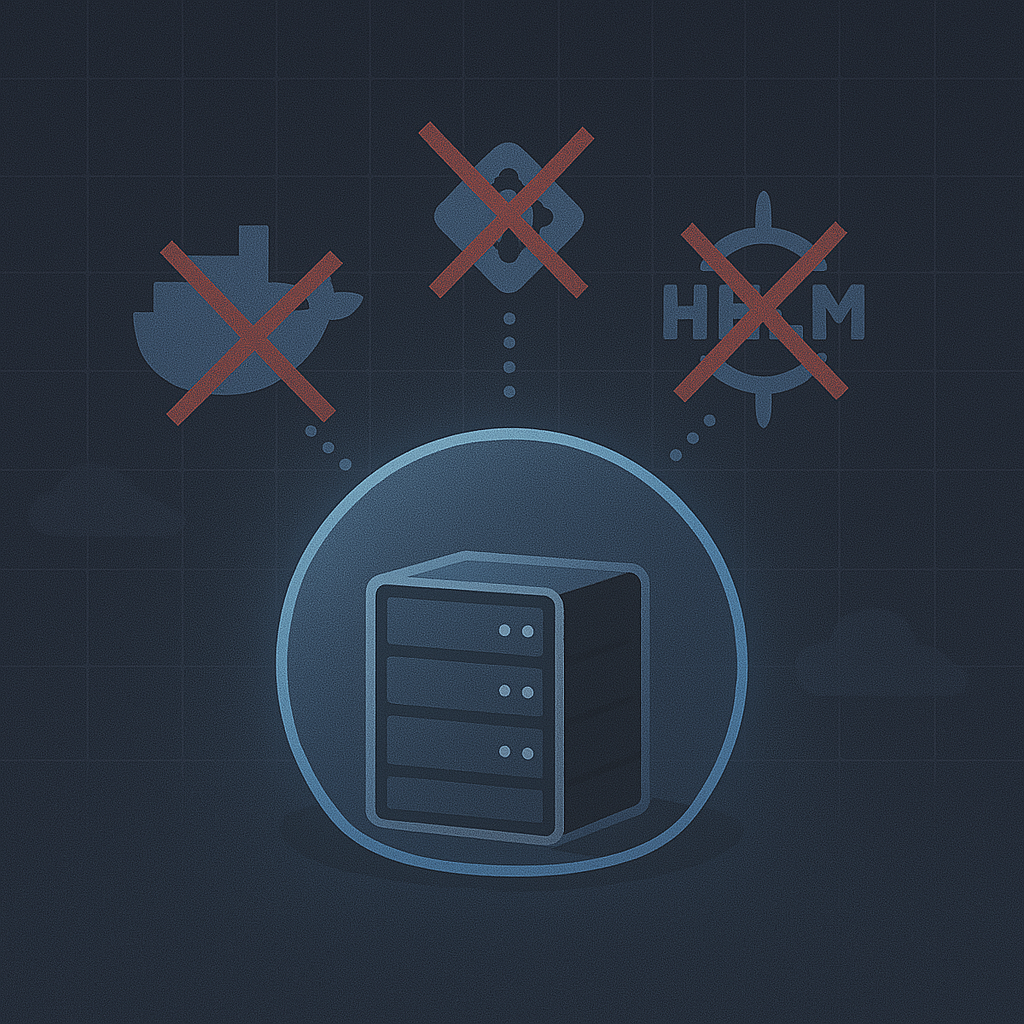
If you’ve ever worked in a disconnected environment - or even just a flaky one - you probably understand.
That feeling when something fails not because your code is broken, but because your tooling made an assumption about connectivity.
A tiny one.
A quiet one.
But critical enough to tank the whole operation.
Let’s talk more about that.
Cloud native assumes the internet will always be there
Most modern platforms lean hard on SaaS services, cloud APIs, dynamic registries, and live secrets. This makes things feel seamless - until the network drops, your git platform goes sideways, or DNS just stops cooperating.
If you’ve ever run a Terraform plan and hit a module timeout
…or kicked off a Helm install that 404’d on the chart repo
…or watched a CI pipeline stall because it couldn’t fetch a KMS token
Then you’ve already felt the cost of that assumption.
But what if the internet isn’t part of the plan?
That’s where disconnected-by-design comes in.
Instead of scrambling to fix breakage after the fact, we start with the idea that nothing outside your control will be available at runtime.
It’s a mindset. One that shifts how you design, build, and deploy cloud native systems - regardless of whether they’re going into a submarine, a remote base, or a normal cloud VPC with risk tolerance.
What this mindset looks like in practice
Let’s play it out:
| Traditional Cloud Native | Disconnected-by-Design |
|---|---|
| Pull from public registries | Bundle images into portable packages |
| Remote secrets from KMS | Ship static secrets or internal vault |
| SaaS observability | Use self-hosted telemetry tools |
| GitOps from GitHub | Mirror Git repos locally |
It’s not about being airgapped.
It’s about being resilient, repeatable, and ready for chaos.
Airgap is just one extreme of a larger spectrum
You don’t have to be fully disconnected to benefit from this approach.
In fact, some of the worst failures I’ve seen happened in “connected” systems:
- Someone revoked the wrong GitHub token mid-deploy
- A container registry timed out in the middle of a rollout
- A team didn’t realize a tool pulled release data from a website
When you treat those dependencies as optional - or at least not critical - you start to build systems that shrug off failure.
That’s the real power of this design.
What do disconnected systems force you to do?
- Think about everything you need ahead of time
- Make your builds deterministic
- Document your process (or bake it into a pipeline)
- Test for failure cases - especially when the internet is sort of available
You don’t get to assume anything will “just work.”
But what you do get is clarity.
And repeatability.
And a system that can stand on its own when everything else is falling apart.
Summary
You don’t need to be deploying to a submarine to benefit from disconnected-by-design.
In fact, building like you don’t have connectivity just makes your stack more honest.
You’ll know exactly what it depends on.
You’ll have a path to recreate it.
And your systems will keep working even when the nice-to-haves disappear.
That’s not just tactical edge resiliency. That’s good engineering.
Let’s continue to lay the foundation for why the past/present/future can benefit from a disconnected-by-design approach to cloud native.
Want to go deeper?
- Join us in the Kubernetes Slack in
#zarf - Check out the Zarf project
- Ping me on socials or Slack if you want to swap notes about deploying in the weirdest places imaginable